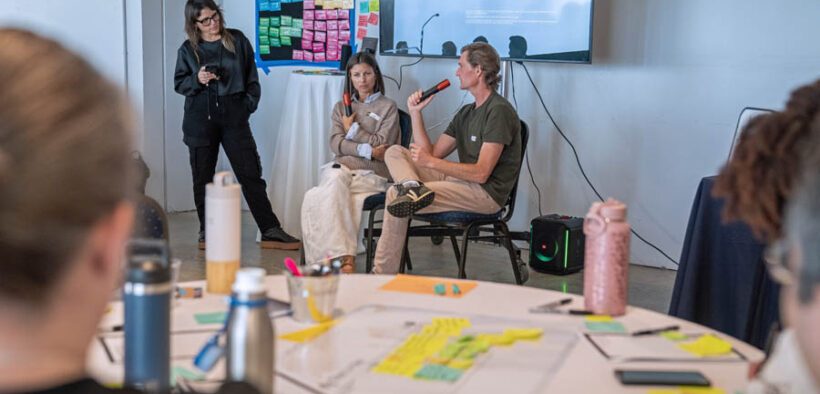Fighting the scarcity mindset: Nonprofits need tech to do more with less

How organizations are overcoming resource challenges with innovation.
As demand for nonprofit services increases and organizations lack sufficient funds to meet demand, more nonprofits are fighting the scarcity mindset and leveraging technology to improve operations and deliver programs and services.
According to Forvis Mazars’ 2025 State of the Nonprofit Sector Report, 77.6% of U.S. nonprofits surveyed said that demand for their services rose in 2024, driven by public health crises, natural disasters, economic pressures and other societal issues.
To tackle increased demand and be more efficient and effective, nonprofits are adopting new technology to implement programs (28.44%), work remotely (37.04%), communicate and manage donors (27.1%), gather and report performance metrics (27.1%), protect networks from cybercriminals (40.74%), and streamline accounting processes (30.56%).
“Demand for services is skyrocketing, and it’s happening because of the societal change that we’re working our way through and the shift in government resources, and now we’re seeing a massive change under the Trump administration,” said Dan Lammot, co-founder and CEO of threshold.world. Based in Puerto Rico with operations in the States and a global customer base, in 2018 threshold.world partnered with Microsoft to design and develop the Common Data Model for Nonprofits (CDM).
“Traditionally, nonprofits have been referred to as the third sector, and some people think this is cute, but … this isn’t cute. This is a necessary sector that fills the gap between government and private sector, and if we starve it, we shouldn’t expect it to solve these (societal) problems,” Lammot told News is my Business.
Government, he stressed, cannot solve these problems. “Its role is to fund research and deploy capital to organizations that do the work, so nonprofits play a critical role.”
Technology and nonprofits
While technology is becoming more prevalent in the nonprofit sector, its development has led to “islands of information.”
“Technology has shrunk the distance between organizations and the humans who do the work, so it has created an opportunity to accelerate the pace of change of social and environmental progress. But when you have lots of different systems and lots of different data and information expanding at an incredible pace, you end up with this massive differential that causes lots of friction. The (CDM) model provides a common language that allows systems, processes and people to work dramatically better together,” Lammot explained.
One of threshold.world’s local clients is Instituto Nueva Escuela (INE), a nonprofit dedicated to implementing the Montessori educational philosophy and methodology in Puerto Rico’s public schools.
INE uses the technology to monitor and evaluate its programs and to build an institutional memory that previously lived in fragmented spaces such as Excel files and paper, said Lina Pérez, threshold.world’s co-founder and chief experience officer.
“There’s no place in the U.S. that has done what INE has done here,” Pérez said. “When you think about what they’ve been able to accomplish with limited resources, I get excited at the possibilities.”
Ironically, Montessori education is driven by qualitative information not quantitative data, Lammot noted. “The irony is that INE is using an artificial intelligence-powered, data-driven system to facilitate a qualitative delivery process that has been around for over 100 years,” he said.
Another client is the Rural Community Assistance Corporation (RCAC), a California-based community development financial institution (CDFI) that serves rural and Indigenous communities through training, technical and financial assistance, and advocacy. The organization uses the Microsoft Cloud for Nonprofits suite to secure its data and save time.
“If you have finite financial resources and access to expertise, and you need to serve more people, you have to be more efficient. This technology helps them be more efficient in their service delivery process so they can serve more people with the same amount of resources,” Lammot said.
Nonprofits in Puerto Rico
The “thresholders,” as they call themselves, discussed how Puerto Rico’s nonprofit sector can reach its potential. Philanthropy, Lammot said, needs to become more important in Puerto Rico.
“Our culture of individual donations won’t power the kind of nonprofit sector that we need, and our government doesn’t have the opportunity to do that now given the challenges it’s working toward solving on its own. So, we need individuals and institutions to fill that gap and allocate their philanthropic capital to the causes they care about the most — empowering the [people] who want to help solve these challenges here,” he said.
Pérez said the nonprofit sector is often stunted by a scarcity mindset, with organizations and donors deeming nonprofits as not deserving of the same level of technology as the private sector.
“As a society, we don’t give nonprofits permission to have the tools they need, whether in the form of talent or technology. It’s frowned upon because there’s been this historical thread or narrative that overhead is a negative thing to have,” she said. “We need to change that narrative, because we’re holding them back.”
Nonprofits, she added, need to take “unapologetic ownership of the mission that they’re after, in all its forms, without asking for permission. To the extent that we keep holding ourselves back from all the possibilities that are in front of us, we’re not going to see things changing at the pace that we need to.”
“I’m entirely optimistic,” Lammot said. “There’s a hope, revitalization and restlessness that you can sense on the island. We see it every day in our team and in many of the nonprofits that we partner with, people who wake up every day and say, ‘This is my home. I’m going to make it better.’ So there’s a feeling that we are, or soon will be, on the upswing.”
Lammot continued: “It takes just a few people to get it started, and we hope to be part of that group to leverage data and modern technology to democratize the best ideas and make that the norm here in Puerto Rico — not because we’re importing that, but because it’s being created here.”






